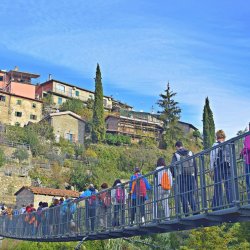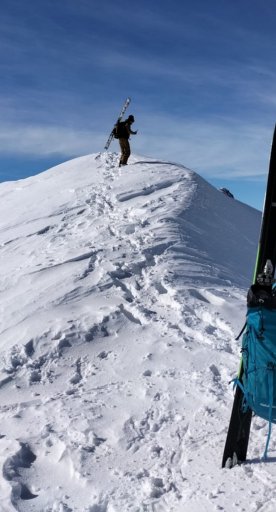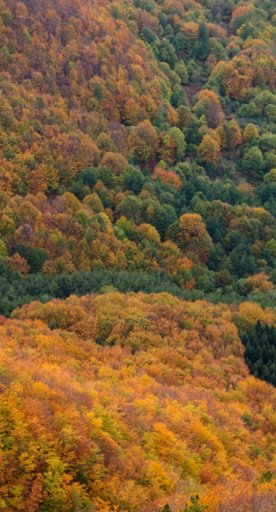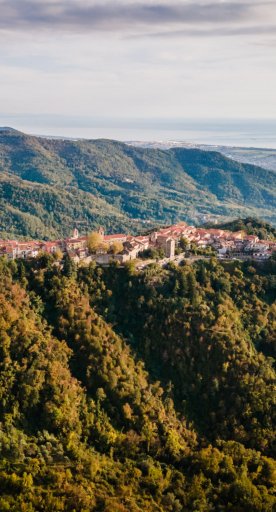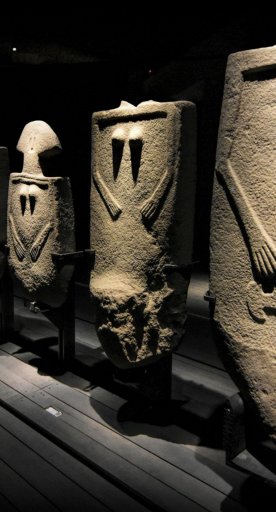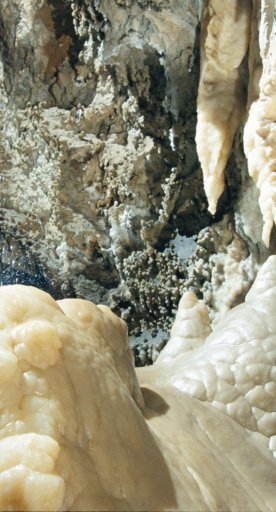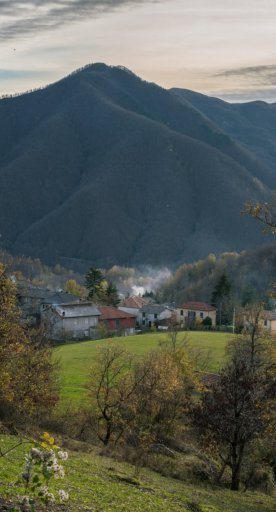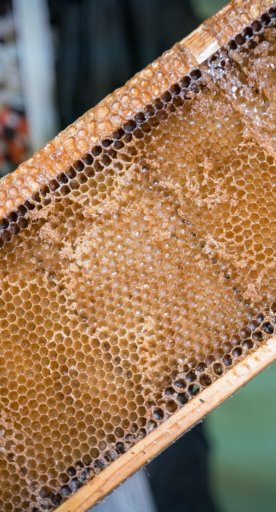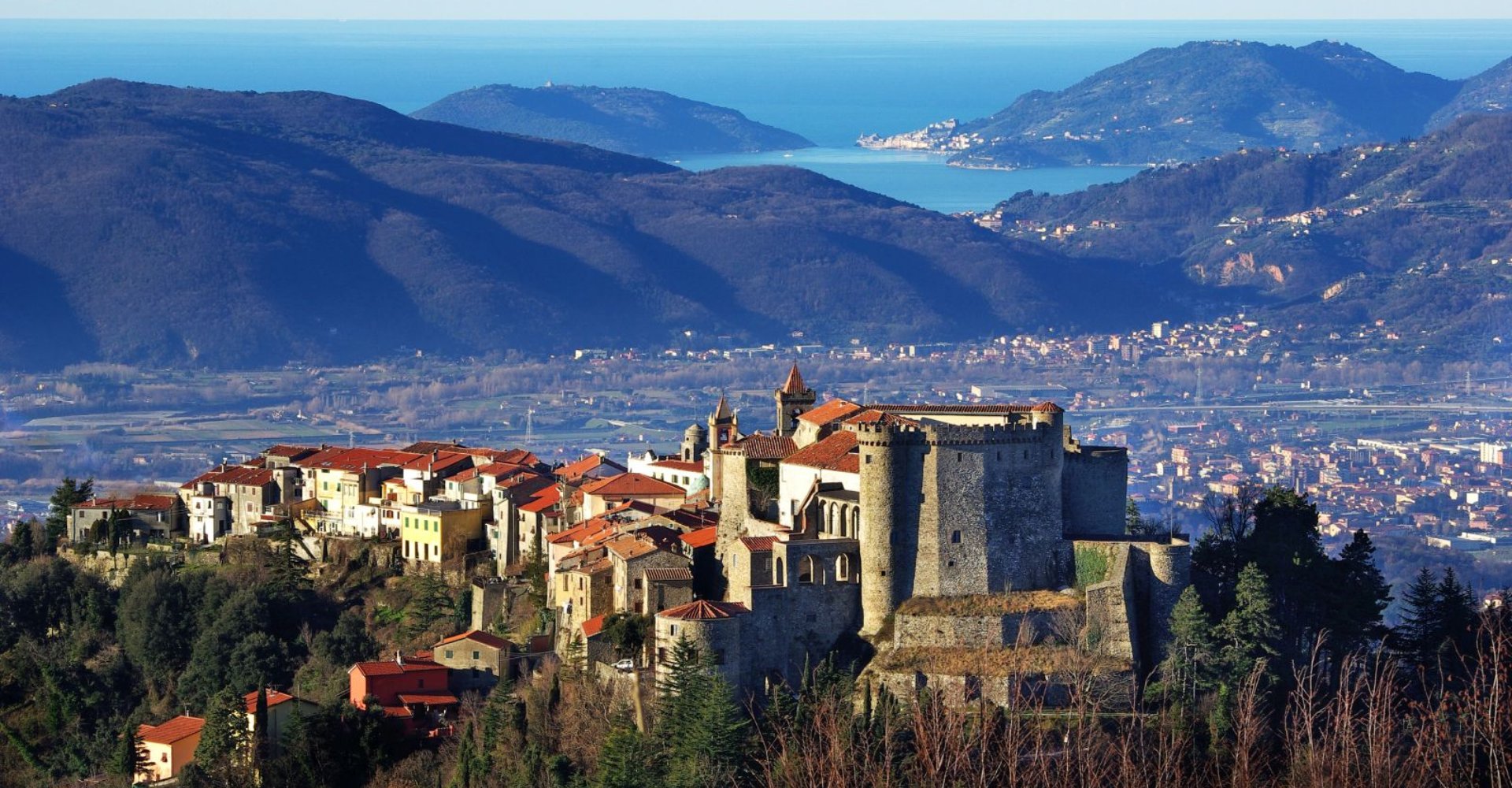

10 fairy castles in Tuscany
Get ready to feel like you’re in a fairy tale in some of the most fascinating castles in Tuscany
A nice tour of the castles in Tuscany is what you need to feel like you’re in a fairy tale and smell the past aura. After all, who among us as a child never wanted to live in a castle? Visiting a castle means entering the culture, history and traditions of an area. Tuscany offers many opportunities in this sense and this post suggests ten possible destinations.
-
1.Castello di Malaspina in Fosdinovo
-
2.Castello di Meleto in Gaiole in Chianti
-
3.Castello di Gabbiano in Mercatale Val di Pesa
-
4.Castello di Brolio in Gaiole in Chianti
-
5.Castello di Vicchiomaggio in Greve in Chianti
-
6.Castello di Verrazzano in Greve in Chianti
-
7.Castello dei Conti Guidi in Poppi
-
8.Castello di Vincigliata in Fiesole
-
9.Castello di Porciano in Stia
-
10.Castello Banfi in Montalcino
Castello di Malaspina in Fosdinovo

Malaspina Castle of Fosdinovo began to be built in 1340 by the will of the Malaspina family on defence towers already existing before 1200. It is considered to be one of the best preserved castles of Lunigiana with its four round towers, a semi-circular rampart, courtyards, patrol trenches above the roof, hanging gardens, galleries and an ancient defensive wall.
Through the elegant Renaissance porch with stone columns you can enter the rooms of the castle, which were decorated and painted in the late 1800s. Beside these, inside you can find antique furniture, paintings, instruments of torture and… the ghost of a beautiful girl who died for love! From the walkways you can enjoy a beautiful view of the Tyrrhenian Sea from Cinque Terre to Versilia.
Castello di Meleto in Gaiole in Chianti

In the heart of Chianti, between Siena and Florence, lies the imposing castle of Meleto, now home to a charming farm that produces excellent wine. The Castle of Meleto dates back, in its oldest parts, to the year 1000. It belonged to the Benedictine monks and then to the Ricasoli family. They took possession of the castle in 1200, and enlarged the building in 1700.
Since 1968, the Viticola Toscana Spa, a farm surrounded by vineyards specialized in production of Chianti Classico DOCG, bought the property. In the basement of the castle, there is a true historical monument, a wine cellar where you can taste wines, extra virgin organic olive oil and salami of Cinta Senese.
Castello di Gabbiano in Mercatale Val di Pesa
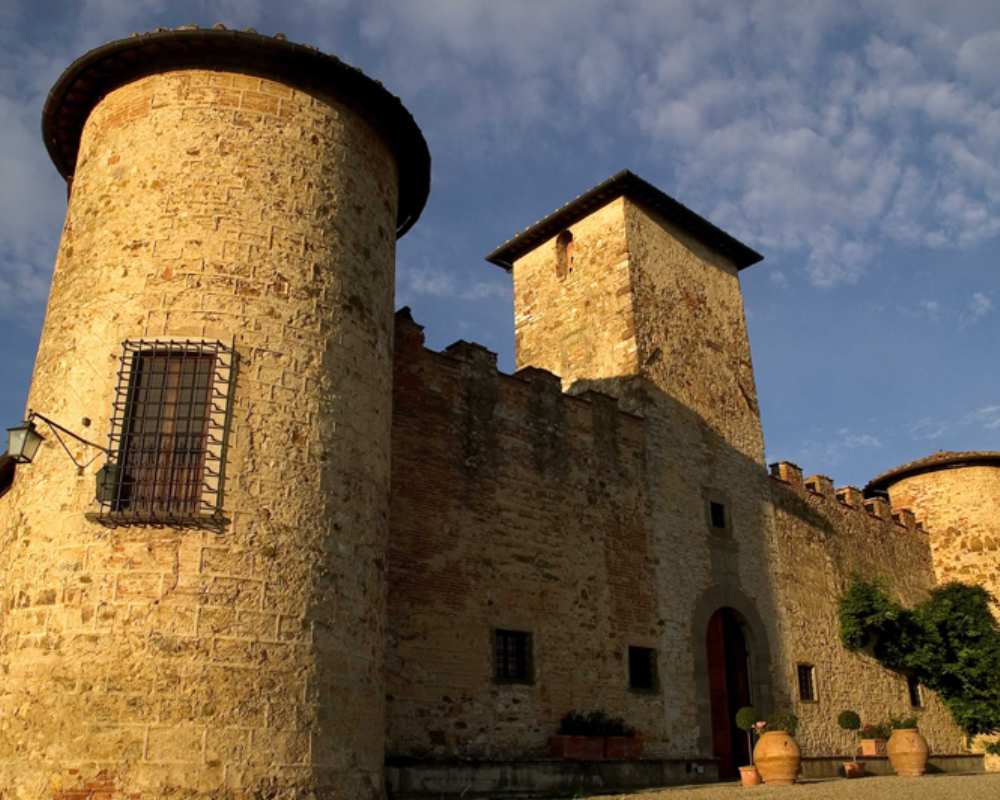
The first news about Gabbiano goes back to the 11th century, when the construction of the square tower in defence of one of the most important roads between Florence and Siena begun. The castle is surrounded by a wonderful countryside, typical of the Chianti area: green hills, vineyards, olive trees and cypresses. The castle was the property of the Florentine Bardi family, who built a big wine cellar for the production and the storage of their wines. At the end of the 12th century they enlarged the castle and encircled it into new fortified walls. At the beginning of the 15th century, the fortress was passed on to the noble Soderini family, who transformed the castle into a fortified mansion.
Today, the owners of the Castle of Gabbiano have restored the entire property, preserving its original features and setting an example of modern viticulture. The castle, which already in the sixteenth century was a place of inspiration loved by Michelangelo, still attracts and welcomes artists.
Castello di Brolio in Gaiole in Chianti
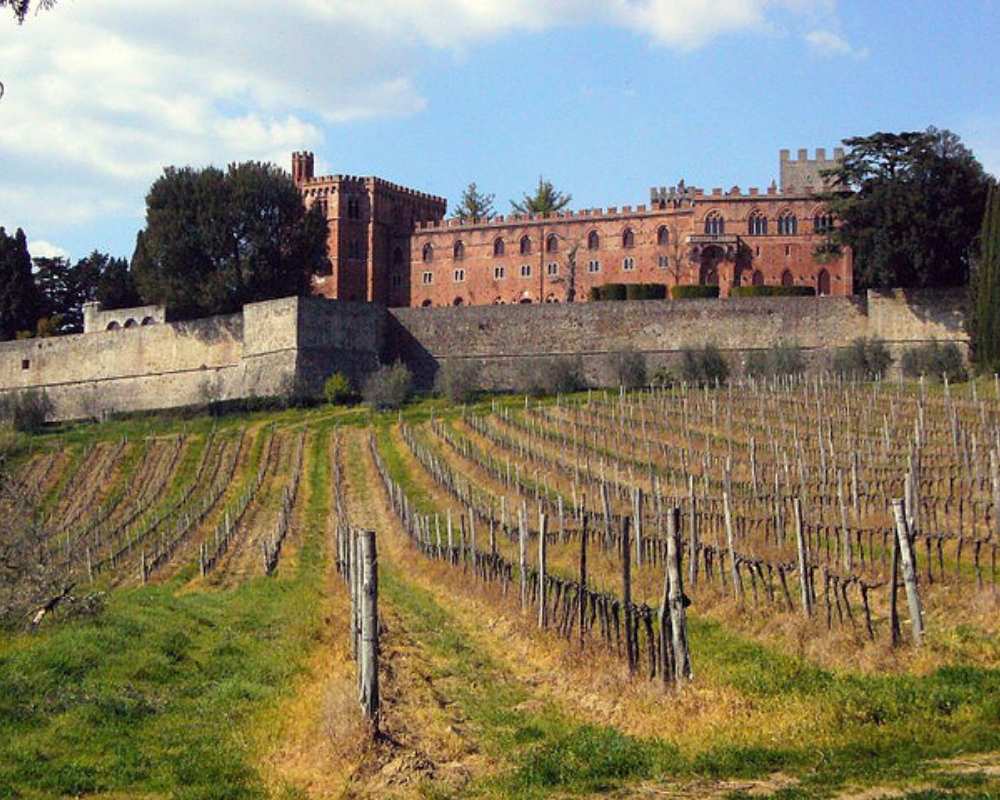
The castle of Brolio is situated in the centre of the area of Chianti, it has a Longobard origin and has been connected to Ricasoli family since the beginning of the 12th century. The castle has been rebuilt and modified several times, and today it bears the marks of the different eras. At first it was caught in the middle of the conflict between Siena and Florence, then it was attacked many times: from the Aragonese and the Spanish during the fifteenth century, to disputes in the seventeenth century right through to bombings and artillery attacks during the Second World War.
The castle is surrounded by the largest vineyards in the Chianti Classico area, between Gaiole and Castelnuovo Berardenga. Brolio is private property but you can visit it with the exception of the private building belonging to the Baron. You can also walk on the ramparts for splendid sights of the Chianti region.
Castello di Vicchiomaggio in Greve in Chianti

The Castello Vicchiomaggio is located in the heart of the Chianti Classico, just 18Km from Florence and 5km from Greve in Chianti. The name Vicchio means village, from the Latin viculum. The original castle was called Vicchio Lambardi, because it belonged to this family, and it is recorded in the Lombard era (in 957) in the records of the Abbey of Passignano. Today only the ruins of its walls and towers remain. In the 16th century the castle became a villa with a garden and took the name of Vicchio Maggio during the rule of the Medici family, in relation to “maggiolate of Calendimaggio”. Next to it there is the renovated Church of Santa Maria in Vicchiomaggio.
During its long and glorious history, Vicchiomaggio Castle has hosted various famous artists, including Leonardo da Vinci, who stayed at the castle while he was painting his masterpiece, Monna Lisa. Today people are even welcomed inside to witness the winemaking process first-hand.
Castello di Verrazzano in Greve in Chianti

The Castle of Verrazzano is located on a hilltop in the Chianti Classico area over the Greve valley. The castle, first Etruscan and then Roman, in the 7th century became property of the Verrazzano family (the famous sailer Giovanni who discovered the bay of New York and the majority of the east coast of America, belonged to this family). Here, the tradition of wine is very old. The vineyards of Verrazzano were recorded in a manuscript created in 1150, and guarded in the Abbey of Passignano.
Nowadays the Castle belongs to the Cappellini family and they produce wine thanks to the 52 hectares of vineyards. The harvest, which usually takes place between September 25th and October 25th, is done exclusively by hand through a careful selection of grapes. It is possible to visit the cellars.
Castello dei Conti Guidi in Poppi

The Castle of Guidi Counts, also known as Poppi Castle, is situated on the hilltop of Poppi, an ancient medieval village between Florence and Arezzo, in the Casentino area.
It is estimated to have been built between the ninth and tenth centuries, even though the earliest documents to mention the castle’s presence only date back to 1191. In the second half of the thirteenth century, Arnolfo Di Cambio, the architect who designed Palazzo Vecchio in Florence, had to extend the palace. In 1440, the Republic of Florence gained possession of the castle and transformed it into the residence of the governor (the “Vicario”) sent by Florence. The Castle houses the Rilliana Library, a collection of extraordinary historical value due to its manuscripts. Read also our article about Poppi.
Castello di Vincigliata in Fiesole
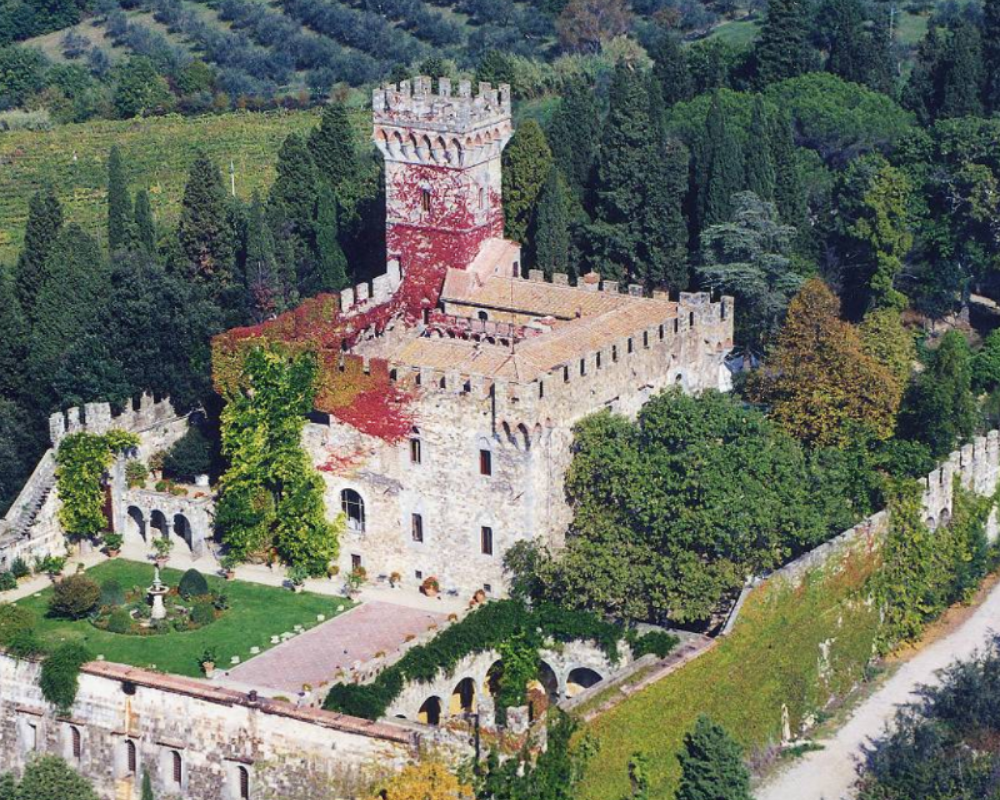
The castle of Vincigliata was first mentioned in 1031, when it was property of the Vinsdomini and Alessandri families. For eight hundred years the castle was sold and gambled among the most important families of Florence, and ultimately it was almost destroyed.
In 1840, the ruins caught the attention of a young English Lord, John Temple Leader, who - walking in the hills of Fiesole - came across the picturesque and fascinating ruins of the castle and decided to buy it. So Sir John called the most famous artisans, sculptors, masons, glaziers and painters of Florence, who contributed to the reconstruction of the castle following the medieval style. Vincigliata reborn and Sir John Temple Leader set up his precious museum with frescoes and bas-reliefs. Since then is used for parties and caterings.
Castello di Porciano in Stia
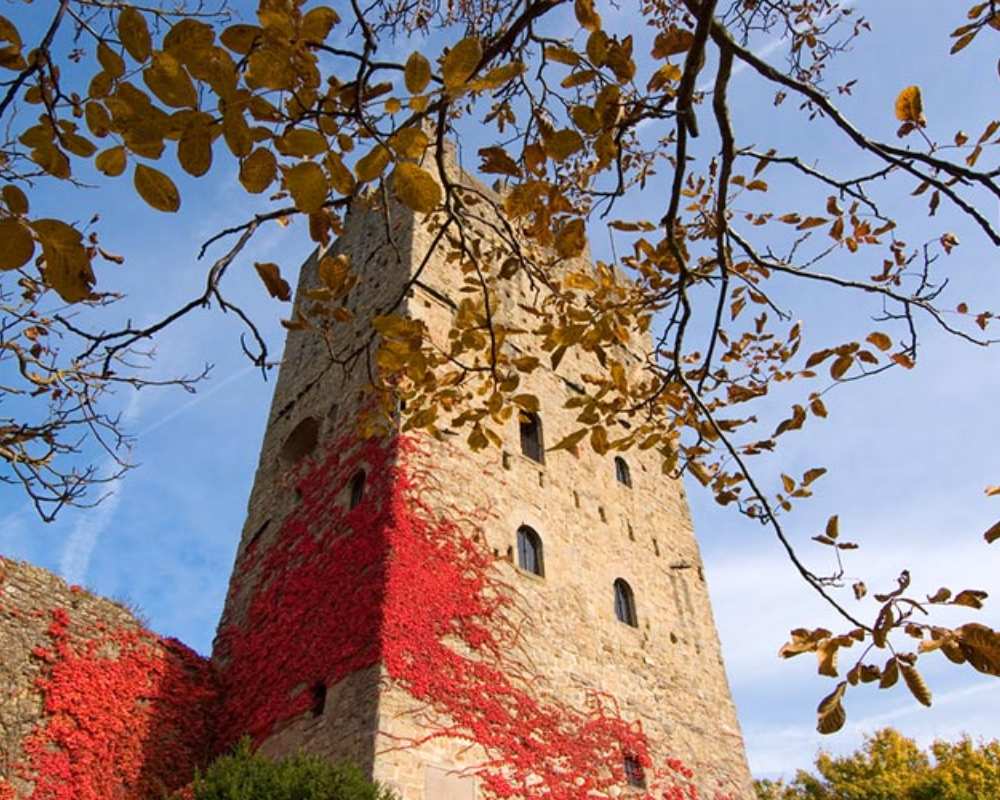
The Castle of Porciano, with its large tower built during the 13th century, dominates and overlooks the town of Stia, in the Casentino Valley. Since the 11th century, Porciano was under the jurisdiction of the powerful Counts Guidi, owners of many other castles in Tuscany and Romagna. It also hosted Dante Alighieri in the 13th century during his exile from Florence. The Guidis left Porciano in 1442 and the castle became property of the Republic of Florence and then of the town of Stia. Already in a state of ruin, an ancestor of the owner bought it in 1793 and from the late 18th century only very basic restoration was done.
The Castle of Porciano is both a museum and a home: the three lower floors are open to the public, while the three upper floors are home to the owners.
Castello Banfi in Montalcino

On these grounds there is a castle, vineyards, a cellar and a charming hotel. This ancient stone hamlet rose in the 1700s is found under the nurturing shade, and the protective walls and towers of Castello di Poggio alle Mura, and served as the dwelling of farmers who laboured for the noble landowners.
Today it has been re-styled into the luxurious rooms and suites of the hotel. Banfi was founded in 1978 by the will of the Italian-American brothers John and Harry Mariani. From the beginning, the two brothers provided a large-scale project, integrating production of quality wine with a modern winery, prioritizing the upkeep of high quality wines.
The original version of this article was written by Serena Puosi.
